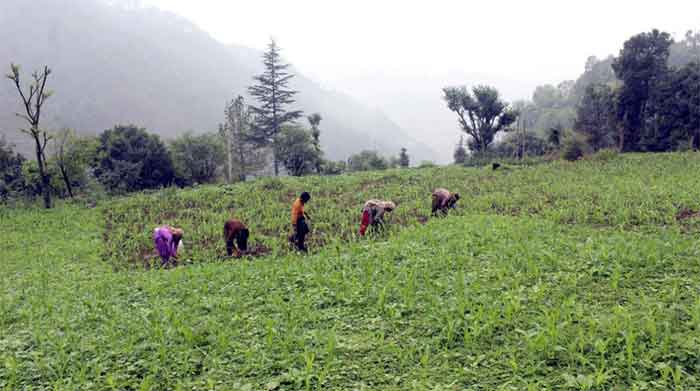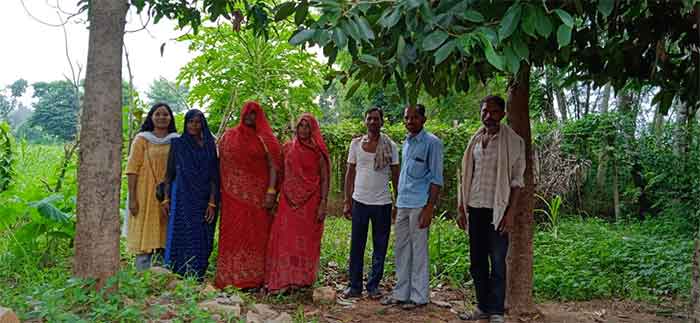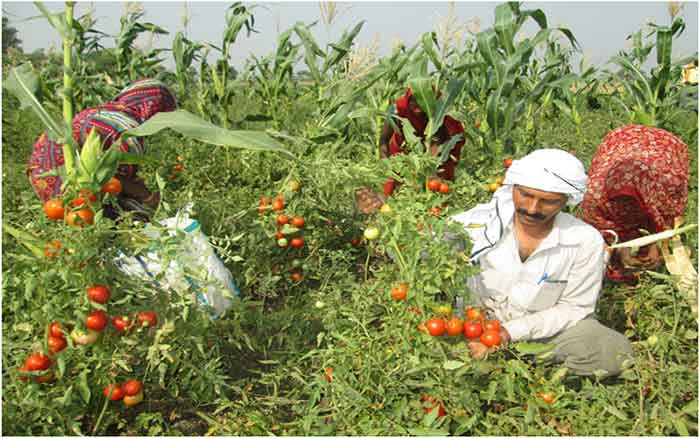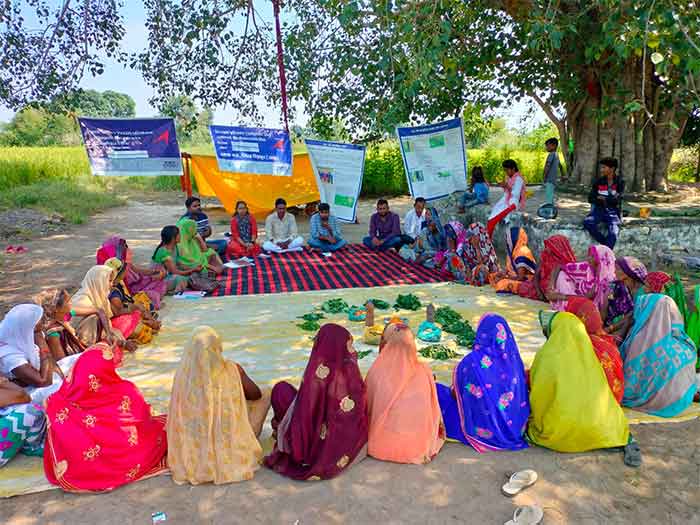
According to recent official data of Himachal Pradesh government, its efforts to spread natural farming practices among farmers have led to 56 per cent reduction of costs of farmers and 27 per cent increase of income among farmers who adopted these practices. This happened under the natural farming prosperous farmers scheme ( prakrit kheti khushhal kisan yojana). According to leading local newspapers this information was provided at the fourth task force meeting of this scheme held at the state secretariat at Shimla on April 19.
In addition good results were also achieved by introducing natural farming methods in some apple orchards where these helped to prevent some diseases. About 121000 farmers and orchard owners have been brought under this scheme in 326 pnchayats. Former Governor Acharya Devvrat is reported to have made an important contribution to initiating this scheme in Himachal Pradesh.
In Uttarakhand the government is trying to declare about 30 per cent of farming area as organic farming area. Here some time back I had an opportunity to discuss with rural communities comparison of natural farming using traditional indigenous seeds with green revolution type farming which uses chemical fertilizers, pesticides and exotic HYV seeds. Everyone agreed that the taste and flavor of traditional varieties grown using natural/organic farming methods is much better and is relished by everyone. People said that nutrition also certainly appears to be better although they cannot establish this scientifically. What can be seen in the context of crops like rice clearly, they said, is that in traditional varieties we get more rice from paddy and when we cook rice then the spread is more in the case of traditional varieties. While eating traditional variety is more filling and we have feeling of adequacy after eating relatively less amount, they said. Fodder yield from traditional varieties is also more. So what may appear at first glance to be somewhat lesser yield from traditional varieties may not actually be less, the people said. Soil fertility is much better maintained in the case of natural farming. Costs of cultivation are much lower.
Despite such experiences of farmers, agricultural departments and agricultural universities generally remain involved in propagating green-revolution type farming with its heavy agri-chemical inputs. There has not been much change in their attitude and instead of learning from sporadic success stories of natural farming or feeling enthused about this, or at least displaying unbiased curiosity, many of these officials remain cynical and discouraging towards natural farming. However there are a few exceptions.
Andhra Pradesh is a state where community based natural farming has received more spread compared to other states, with government support as well as with important role of voluntary organizations, dedicated individuals ( including scientists) and farmers organizations, but even here there is resistance from powerful persons placed in important positions in the agricultural officialdom, not to mention agribusiness interests.
Sikkim is another state which has made significant progress in natural/organic farming. In fact this is the only state which has been declared to have 100% organic farming. Although overall farmland here is relatively less, still this effort covers about 66000 farmers covering about 76000 hectares. This shift to organic farming also started attracting more tourists. However at grassroots level more efforts have to be made.
Interesting and encouraging efforts in the direction of natural farming by dedicated individuals can be found in almost all states, including green revolution leaders like Punjab. A heartening feature is the higher inclination of women farmers towards natural farming in several places.
The support given by the union government is very uncertain. Some publicized statements of support are followed by steps in the reverse direction. The lobbies for the introduction and spread of GM crops and big agribusiness interests are very powerful at the level of the union government. The schemes under which natural farming can be promoted often face budget cuts. There is increasing evidence that the overall tendency of the union government these days is strongly to push farming towards higher corporatization.
Hence the role of voluntary organizations, farmers practicing natural farming, farmers’ organizations committed to this, independent scientists devoted to this is likely to be quite important. It is good that such farmers and their small organizations and dedicated scientists have been trying to get united although they are not a big force yet. Comparatively the big agribusiness interests , together with those colluding with them, are a much bigger force. This is a reality we have to face. One can only hope that with the emerging success of efforts of natural farming the spread of such farming will be more rapid and more sustained.
Bharat Dogra is a journalist and author. His recent books include Man Over Machine and Protecting Earth for Children.
GET COUNTERCURRENTS DAILY NEWSLETTER STRAIGHT TO YOUR INBOX
















































